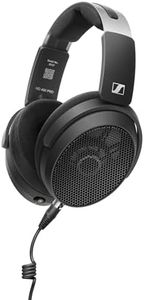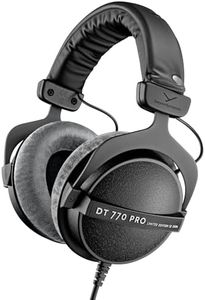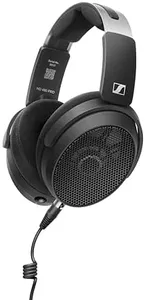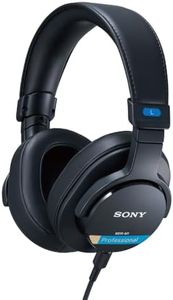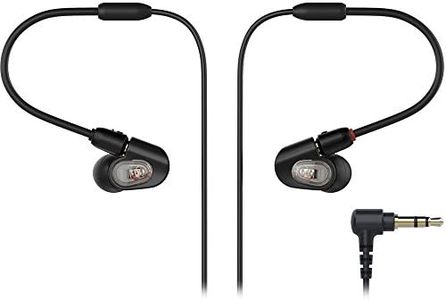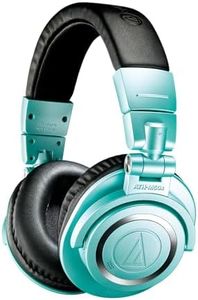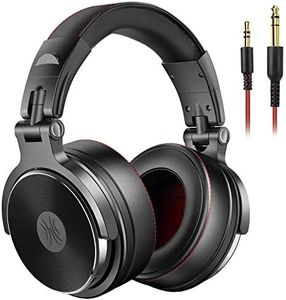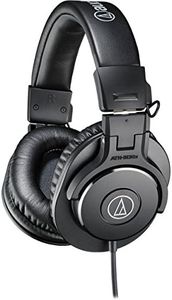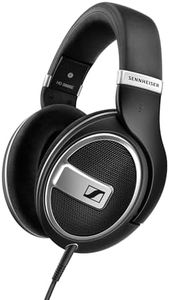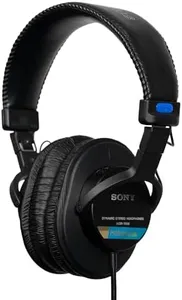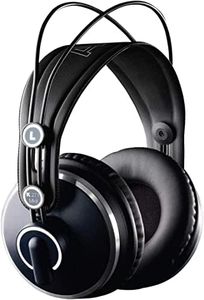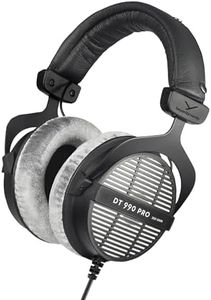We Use CookiesWe use cookies to enhance the security, performance,
functionality and for analytical and promotional activities. By continuing to browse this site you
are agreeing to our privacy policy
10 Best Cheap Studio Headphones
From leading brands and best sellers available on the web.Buying Guide for the Best Cheap Studio Headphones
Choosing the right studio headphones is essential if you want to enjoy good sound quality and accurate audio representation, even when you're on a tight budget. Studio headphones are designed for clear, honest sound, which helps musicians, podcasters, and creators hear details in their work as they truly are. Start by thinking about where and how you’ll be using your headphones: will you mostly work at home, in a quiet studio, or on the go? This will determine which features matter most to you. Always try to imagine your main use-case, as it will guide your decisions through the various specifications that matter in studio headphones.Sound Signature (Neutrality)The sound signature refers to the way headphones represent different parts of the audio spectrum, such as bass, mids, and highs. Studio headphones are best when they offer a neutral sound signature, meaning they don’t boost or reduce any part of the sound. This is important because it helps you hear your recordings or music exactly as it is, without color or exaggeration. If you're doing critical listening or mixing, prioritize headphones known for neutrality. However, if you want headphones for casual listening as well, a slightly warmer sound might be more enjoyable, though less accurate for studio work.
Driver SizeThe driver is the part of the headphone that creates sound. Driver size is usually measured in millimeters (mm), and in headphones, drivers typically range from about 30mm to 50mm. Larger drivers can sometimes produce deeper bass and louder sound, but size alone doesn’t guarantee better quality. For studio work, focus less on size and more on clarity; drivers in the range of 40mm to 50mm are common and typically suitable for most studio uses. Your main concern should be how clearly they reproduce details rather than just raw power.
Closed-back vs Open-backHeadphones come in either closed-back or open-back designs. Closed-back headphones protect your ears from outside noise and keep the sound from leaking out. Open-back headphones, meanwhile, let air and sound pass through the ear cups, making the audio feel more natural and spacious but less isolated. If you'll be recording or working in a noisy environment, closed-back headphones are usually best. Open-back is better for mixing in quiet spaces, as you get a more accurate sense of space and instrument separation.
Comfort and FitComfort can make a huge difference, especially during long listening or production sessions. This specification includes the weight of the headphones, the padding on the earcups and headband, and how adjustable the headband is. Some headphones can feel tight or make your ears warm after long use. Over-ear designs with soft cushions are usually the most comfortable for studio work. Try to pick a design that feels good for your head shape and can be worn comfortably for hours at a time.
ImpedanceImpedance, measured in ohms (Ω), tells you how much power the headphones require to produce sound. Lower impedance (like 32Ω) can be used easily with phones, laptops, or other low-powered devices. Higher impedance headphones (like 80Ω or more) may need an audio interface or dedicated amplifier to reach their full potential and volume. If you plan to use the headphones directly with common consumer electronics, stick to lower impedance models. If you’re connecting them to studio equipment, higher impedance is fine—as long as your equipment can drive them.
Durability and Build QualityStudio headphones should be able to handle regular use and sometimes even a bit of rough treatment from travel or repeated wear. Pay attention to the materials used in the earcups, headband, and joints. Cheap plastic might not hold up as well over time. If you’re planning to use headphones daily or carry them in a bag, look for reinforced cables and solid construction, even at budget price points. Reliability is crucial for both amateur and professional use.
Detachable CableSome studio headphones have detachable cables, which can be replaced if damaged, while others have a fixed cable. Detachable cables are handy because they extend the lifespan of your headphones and offer flexibility (for example, using a coiled or straight cable depending on your situation). If you foresee situations where the cable could wear out or get damaged, or you know you'll be moving around a lot with your headphones, a detachable cable is a very practical feature.
